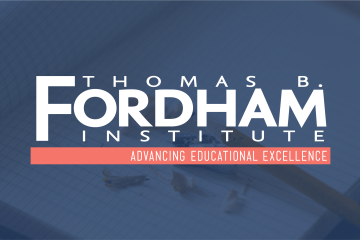Academic skills alone are not enough for students to find success later in life, whether in their career specifically or in their broader participation in society. They must also possess what are commonly referred to as “soft skills.” However, finding ways to incorporate the acquisition of such skills into instruction at scale and to determine whether students have mastered them has proven challenging for many state and local policymakers, not to mention practicing teachers.
A new report from the Center for Assessment tackles this issue, outlining the barriers to teaching and assessing “soft skills”—or what the report regrettably refers to as “twenty-first century competencies”—but ultimately stopping short of providing clear, actionable solutions in its guidance for policymakers.
It adopts the OECD definition of the competencies as knowledge, skills, and attitudes necessary to find success working in a global knowledge economy, participating in a diverse society, using new technologies, and adjusting to change. It further describes the skills as teachable, applicable across domains, complex and overlapping, and reflective of higher-order skills. Unfortunately, these descriptions of the competencies are broad and abstract, providing much less insight into the actual meaning of the term than definitions like the Department of Labor’s explanation of “soft skills.”
The report cites several sources, including studies by America Succeeds and the World Economic Forum, which show that twenty-first century competencies are requested by employers more than technical skills and make up 90 percent of the skills considered “core” by employers. As a result, many states are considering how to incorporate such competencies into instruction and how to develop assessments that measure student progress in mastering them.
But that’s a huge challenge, beginning with the issue of crafting a single clear definition for the competencies themselves, which obviously limits the extent to which assessments can be used to make general ability claims. Furthermore, little research has been done on how competencies like strong critical thinking or creativity develop, presenting a significant hurdle to determining performance targets that specifically define what students should know at any given point in the learning process. The overlapping nature of the competencies makes it tricky to accurately measure them in isolation. And the nature of the competencies calls for assessment item types that go beyond traditional tests—but these other item types may allow for limited comparability and scoring them is apt to be deeply subjective. According to the report, these and many other barriers make it nearly impossible to accurately and reliably assess students’ mastery of twenty-first century competencies.
Perhaps we ought not be surprised, therefore, that while this report does a good job of outlining the challenges facing those hoping to integrate twenty-first century competencies into the classroom and the assessment system, the guidance it provides for policymakers and practitioners relies heavily on theory and is frustratingly devoid of concrete examples or actionable recommendations. For example, the report’s guidance highlights the importance of developing research-backed continua to facilitate skill development, a recommendation that—while theoretically sound—is practically inactionable for policymakers, given the lack of research on these competencies that is mentioned earlier in the report. The report also cautions policymakers against using assessments of the competencies for high-stakes purposes—guidance that may be important, but does not solve the issues the report focuses on, which often deter policymakers and teachers from assessing the competencies at all.
Ultimately, this report is a valuable resource for policymakers and educators seeking to understand the complexities of measuring non-academic skills. But until states and districts pursue clear, research-backed models for implementation, the vision of reliably assessing these competencies will remain just that—a vision.
SOURCE: Chris Brandt, Carla Evans, and Chris Domaleski, “Assessing 21st Century Competencies: Guiding Principles for States and Districts,” National Center for the Improvement of Educational Assessment (January 2025).




